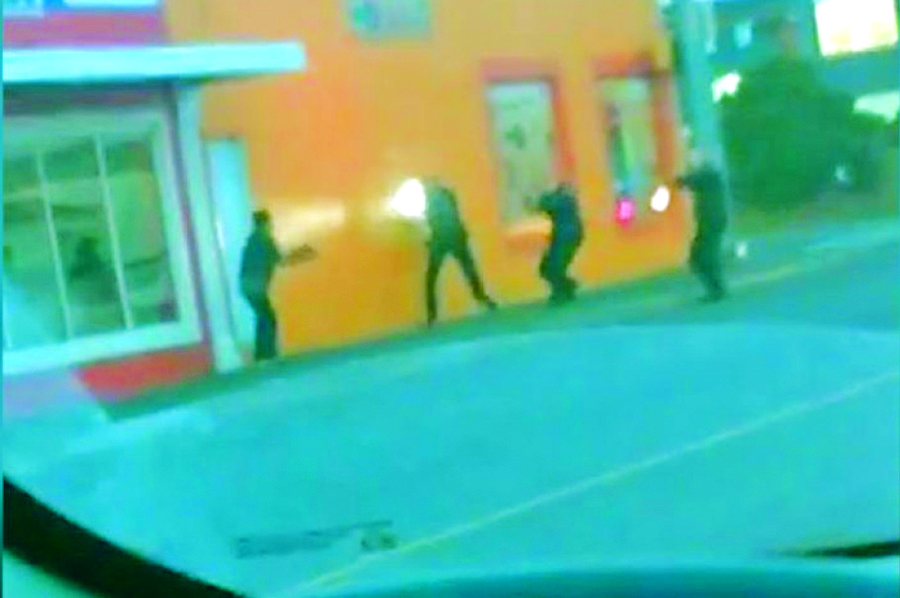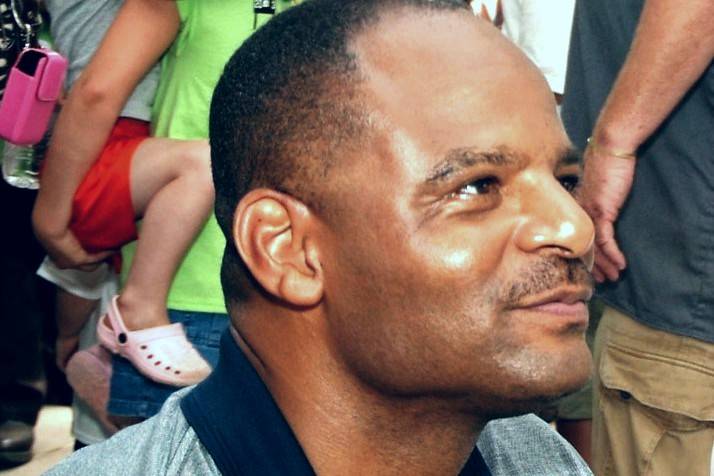If police-car and body-cam videos are such valuable eyewitness media, why is it that officials keep telling us we don’t see what we’re seeing?
They tell us we didn’t see New York City cops unnecessarily kill unarmed street peddler Eric Garner after applying a banned chokehold. Even as the medical examiner was calling the death a homicide, the police maintained that officer Daniel Pantaleo was admistering a legal “headhold.” No one was charged.
We were also wrong, they tell us, when we clearly saw that mentally ill unarmed veteran Brian Beaird was not reaching for his waistband when he was shot by Los Angeles police 21 times. No one was charged in the seemingly unnecessary death—except taxpayers, after LAPD recently paid $5 million to Beaird’s family.
And we supposedly didn’t see unarmed farmworker Antonio Zambrano-Montes with his empty hands out in front of him as he was riddled with bullets by Pasco police on February 10. No one has been charged in that case either—though Zambrano-Montes’ family is challenging that, having hired both a Seattle attorney and the lawyer who represented the families of Michael Brown, Trayvon Martin and Tamir Rice.
We don’t often see the full picture of what happened, police and prosecutors like to argue. Tapes typically begin rolling at the point of conflict, leaving off the foreplay. Sometimes the camera blinks at a crucial moment, like when a suspect makes that “move to the waistband.”
Obviously we’re not getting the complete story while watching those new body-cam videos on the Seattle Police YouTube channel, for example. They’re choppy, misdirected, with portions blurred for privacy.
But is there a more definitive video than the one Dario Infante Zuniga shot on his cell phone in Pasco? I’ve watched it several dozen times and read others’ assessments, pro and con. My view on it hasn’t changed since the first time I saw it—this was a bad shoot. It looks like manslaughter caught on tape.
Zambrano-Montes, 35—an illegal immigrant who was out of work, separated from his wife, and depressed after his house caught fire a few weeks earlier—was allegedly throwing “softball-size” rocks at cars that evening in Pasco.
As the Zuniga vid begins, we see—in a long shot from inside a car—police running around several squad cars with blue lights flashing. We hear five gunshots. Police and witnesses say officers were shooting at the fleeing suspect, bullets flying through a busy intersection in the late afternoon. Zambrano-Montes reportedly had been throwing rocks at police after they arrived and was shot with a taser that had no effect.
Not unlike the Ferguson, Mo., shooting of Mike Brown, Pasco police have released few details. But they do say Zambrano-Montes was accused last year of trying to grab an officer’s gun during an arrest, and earned a six-month sentence for it.
Next, the cell camera swings into a clear view of the intersection and Zambrano-Montes is seen running, possibly limping, as he crosses the street with officers in close pursuit. His hands are up, then out, as he trots along a sidewalk next to Vinny’s Bakery & Cafe. He twists and looks back, seemingly attempting to stop and submit. He is holding his hands away from his body. Finally he halts and turns, hands in front. He briefly touches both hands to his shirt—not his waistband. An enlarged photo, taken at that point from the video, shows Zambrano-Montes with arms outstretched.
This is the crucial frame—the Pasco Moment. What has happened up to now doesn’t matter. We are about to find out if officers are as well-trained in holding fire as they are in releasing it. There’s no audio, so we don’t know what might have been said (family members say Zambrano-Montes spoke little English and the Tri-City Herald reports that the police shooters were not fluent in Spanish).
As three officers fire almost a dozen rounds at point-blank range, Zambrano-Montes is holding his empty hands in plain sight. He crumples to the pavement and dies.
At a press conference last week, members of surrounding agencies known as the Tri-City Special Investigation Unit, which is probing the death, said 17 shots were fired. Of those, said Kennewick Sgt. Ken Lattin, “five or six rounds struck Mr. Zambrano.” He was uncertain of the count, he said, because autopsy results don’t agree. The official autopsy came up with five—and none in the back. But two separate autopsies, authorized by Zambrano-Montes’ widow and parents, found more.
Says Charles Herrmann, the family’s Seattle attorney, “the body bore as many as eight entrance wounds, two of which were definitely on his backside.” If correct, Zambrano-Montes could have been struck during the first volley, and was already wounded when he held out his hands and was shot dead.
Herrmann filed, then withdrew, a $25 million claim against Pasco on behalf of the widow, opting this week to join forces and work on a legal strategy with prominent civil-rights attorney Benjamin Crump, who represents Zambrano-Montes’ parents. On MSNBC this week, speaking about the Pasco case and the Cleveland shooting of Tamir Rice, who had a toy gun, Crump said, “It’s riveting that we have video now, and so hopefully more people than just the victims in our community are saying this is wrong.” The Justice Department is also reviewing the cases.
The Pasco incident was the “unjustifiable killing of an unarmed man,” Herrmann says. With the video as his centerpiece, he thinks a civil action will eventually prove it. randerson@seattleweekly.com
Rick Anderson writes about sex, crime, money, and politics, which tend to be the same thing. His latest book is Floating Feet: Irregular Dispatches From the Emerald City.









